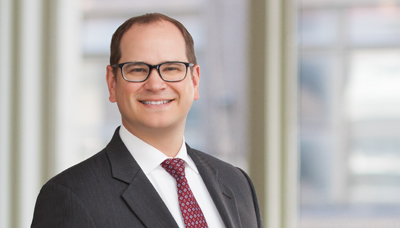In July 2013, the U.S. Supreme Court issued an important decision for the biotechnology industry in Association for Molecular Pathology v. Myriad Genetics (“Myriad”). In its decision, the Court found that naturally occurring DNA sequences were not eligible to be patented in the United States under 35 U.S.C. § 101. However, the Court determined that artificially created DNA is patent eligible in the United States because it is not naturally occurring. Shortly after the Myriad decision, the USPTO issued interim guidelines to its Examiners regarding evaluation of DNA-based inventions.
On March 4, 2014, the USPTO issued a full guidance memorandum to Examiners, entitled “Guidance For Determining Subject Matter Eligibility Of Claims Reciting Or Involving Laws of Nature, Natural Phenomena, & Natural Products.” A copy of the guidance memorandum can be found at http://www.uspto.gov/patents/law/exam/myriad-mayo_guidance.pdf.
Guidance Encompasses Multiple Recent U.S. Supreme Court Decisions
Importantly, the guidance memorandum is not limited to determining the patent eligibility of the subject matter at issue in Myriad (i.e., if DNA is eligible to be patented in the United States). Instead, the guidance memorandum is more extensive in scope and addresses patent eligibility of all claims (i.e., machine, composition, manufacture, and process claims) that involve laws of nature, natural principles, natural phenomena, and/or natural products. In essence, the guidance speaks to the U.S. Supreme Court’s 2012 decision in Mayo Collaborative Services v. Prometheus Laboratories, Inc. regarding the patentability of diagnostic method claims as well as the Myriad decision.
Guidance Establishes Three-Part Inquiry for Determining Subject Matter Patent Eligibility
The guidance memorandum summarizes the overall process for determining the subject matter eligibility of an invention in three questions:
- Is the claimed invention directed to one of the four statutory patent-eligible subject matter categories: process, machine, manufacture, or composition of matter?
- If the answer to the first question is yes, does the claim recite or involve one or more judicial exceptions (for example, laws of nature, natural principles, natural phenomena, or natural products)?
- If the answer to the second question is yes (or maybe), does the claim as a whole recite something “significantly different” than the judicial exception(s)?
Guidance Sets Forth Numerous Factors for “Significantly Different” and Examples of Various Subject Matter
Furthermore, the guidance memorandum includes many factors to consider when determining if claimed subject matter is “significantly different” than laws of nature, natural principles, natural phenomena, or natural products. For example, a product that is markedly different in structure from naturally occurring products weighs a claim towards subject matter eligibility. In contrast, a product that is not markedly different in structure from naturally occurring products weighs a claim against subject matter eligibility. Specifically, in regards to the question at issue in Myriad (if DNA is eligible to be patented), the guidelines state that the fact that a marked difference came about as a result of routine activity or via human manipulation of natural processes does not prevent the marked difference from weighing in favor of patent eligibility.
The guidance memorandum also includes several example claims and provides an analysis of the subject matter eligibility for each claim. In particular, composition claims reciting a natural product, method claims reciting a natural product, and process claims involving a natural principle and reciting natural products are addressed by the guidance memorandum. The example claims shown in the guidance memorandum are important indicators for determining the subject matter eligibility of current and future inventions according to U.S. patent laws.
For more information, contact the Barnes & Thornburg attorney with whom you work or member of the firm’s Intellectual Property Law Department in the following offices: Atlanta (404-846-1693), Chicago (312-357-1313), Columbus (614-628-0096), Delaware (302-300-3434) Elkhart (574-293-0681), Fort Wayne (260-423-9440), Grand Rapids (616-742-3930), Indianapolis (317-236-1313), Los Angeles (310-284-3880), Minneapolis (612-333-2111), South Bend (574-233-1171), Washington, D.C. (202-289-1313).
© 2014 Barnes & Thornburg LLP. All Rights Reserved. This page, and all information on it, is proprietary and the property of Barnes & Thornburg LLP. It may not be reproduced, in any form, without the express written consent of Barnes & Thornburg LLP.
This Barnes & Thornburg LLP publication should not be construed as legal advice or legal opinion on any specific facts or circumstances. The contents are intended for general informational purposes only, and you are urged to consult your own lawyer on any specific legal questions you may have concerning your situation.
Visit us online at www.btlaw.com and follow us on Twitter @BTLawNews.











/Passle/6488d4630e7e25c9ac9f834a/SearchServiceImages/2024-11-14-13-11-27-495-6735f6fff42d6cc59c8ec5c1.jpg)
/Passle/6488d4630e7e25c9ac9f834a/SearchServiceImages/2024-11-11-22-02-38-042-67327efe31216b909e6ea644.jpg)
